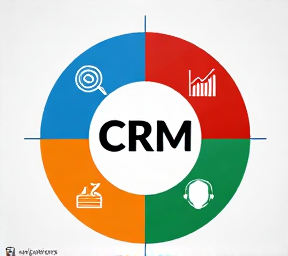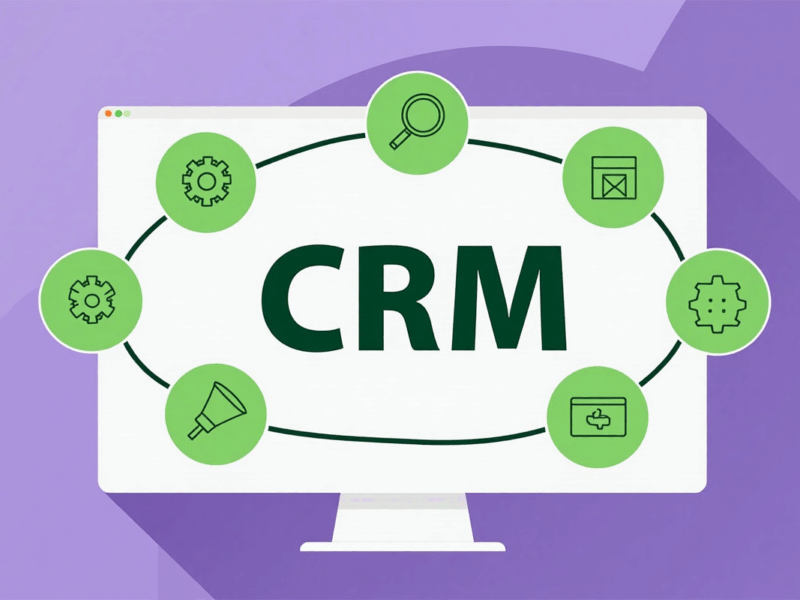The Best Personalization Strategies in CRM for 2025: Attract and Retain Customers Effectively
In the ever-evolving landscape of customer relationship management (CRM), personalization has emerged as a critical component for businesses aiming to attract and retain customers. As we move into 2025, the importance of tailoring customer experiences cannot be overstated. This article will explore the best personalization strategies in CRM, providing actionable insights to help businesses enhance customer engagement and loyalty.
Understanding Personalization in CRM
What is Personalization?
Personalization in CRM refers to the practice of using customer data to tailor interactions and communications based on individual preferences, behaviors, and needs. This approach goes beyond basic segmentation; it involves creating unique experiences for each customer throughout their journey with your brand.
Why is Personalization Important?
Personalization is crucial for several reasons:
- Enhanced Customer Experience: Personalized interactions make customers feel valued and understood, leading to higher satisfaction rates.
- Increased Engagement: Tailored messages are more likely to resonate with customers, resulting in improved engagement metrics.
- Higher Conversion Rates: When customers receive relevant offers and content, they are more likely to convert into paying customers.
- Customer Loyalty: Personalized experiences foster emotional connections, encouraging repeat business and long-term loyalty.
Key Strategies for Effective Personalization in CRM
1. Leverage Customer Data
Collecting Data
The foundation of effective personalization lies in the quality of customer data. Businesses should collect data from various sources, including:
- Website Interactions: Track how customers navigate your website, including pages visited and time spent on each page.
- Purchase History: Analyze past purchases to identify trends and preferences.
- Customer Feedback: Gather insights through surveys and feedback forms to understand customer needs better.
Analyzing Data
Once data is collected, businesses must analyze it to uncover actionable insights. Use data analytics tools to segment customers based on demographics, purchase behavior, and engagement levels.
2. Implement Segmentation Strategies
Behavioral Segmentation
Segmenting customers based on their behavior allows businesses to create targeted marketing campaigns that resonate with specific groups. For example:
- Frequent Buyers: Offer exclusive discounts or loyalty rewards to encourage repeat purchases.
- Inactive Customers: Send re-engagement emails with personalized offers to win back their attention.
Demographic Segmentation
Demographic segmentation involves categorizing customers based on characteristics such as age, gender, location, and income level. This strategy enables businesses to tailor messaging that aligns with the interests and needs of different demographic groups.
3. Utilize Automation for Personalized Communication
Automated Emails
Marketing automation tools can help businesses send personalized emails based on customer behavior. For instance:
- Welcome Emails: Automatically send a personalized welcome email when a new customer signs up.
- Abandoned Cart Reminders: Trigger reminders for customers who leave items in their shopping carts without completing the purchase.
Dynamic Content
Dynamic content allows businesses to customize email content based on individual recipient data. This means that different customers can receive different content within the same email campaign, increasing relevance and engagement.
4. Create Customer Journey Maps
Customer journey mapping is a powerful tool for understanding how customers interact with your brand at each stage of their journey. By visualizing the customer experience, businesses can identify key touchpoints where personalization can be implemented effectively.
Stages of the Customer Journey
- Awareness: How do potential customers discover your brand?
- Consideration: What information do they need to make a decision?
- Purchase: How can you facilitate a smooth buying process?
- Post-Purchase: How do you engage customers after a sale?
By mapping out these stages, businesses can tailor their marketing efforts accordingly.
5. Foster Customer Engagement Through Feedback
Collecting Feedback
Regularly soliciting feedback from customers allows businesses to understand their preferences better. Use surveys, polls, or direct communication channels to gather insights on customer satisfaction and areas for improvement.
Acting on Feedback
Once feedback is collected, it’s essential to act on it promptly. Implement changes based on customer suggestions and communicate these improvements back to your audience. This shows customers that their opinions matter and fosters loyalty.
6. Use AI and Machine Learning for Predictive Analytics
Artificial intelligence (AI) and machine learning can significantly enhance personalization efforts by analyzing vast amounts of data to predict future customer behavior.
Predictive Analytics Applications
- Personalized Recommendations: Use AI algorithms to suggest products or services based on previous purchases or browsing history.
- Churn Prediction: Identify at-risk customers by analyzing patterns in their behavior, allowing businesses to take proactive measures to retain them.
7. Integrate CRM with Other Marketing Tools
Integrating your CRM system with other marketing tools enhances data sharing and streamlines processes. This integration allows for a more comprehensive view of customer interactions across various platforms.
Tools for Integration
- Email Marketing Platforms: Connect your CRM with email marketing tools like Mailchimp or HubSpot for seamless campaign management.
- Social Media Management Tools: Integrate social media platforms to track engagement metrics and tailor content accordingly.
- Analytics Tools: Use analytics platforms like Google Analytics to gain deeper insights into customer behavior across different channels.
Measuring Success in Personalization Efforts
Key Performance Indicators (KPIs)
To evaluate the effectiveness of your personalization strategies, track relevant KPIs such as:
- Customer Engagement Rates: Monitor email open rates, click-through rates, and social media interactions.
- Conversion Rates: Measure how many leads convert into paying customers after receiving personalized communications.
- Customer Retention Rates: Analyze how well your personalization efforts contribute to retaining existing customers over time.
- Customer Satisfaction Scores (CSAT): Gather feedback through surveys to assess overall satisfaction levels among your audience.
Continuous Improvement
Personalization is not a one-time effort; it requires ongoing optimization based on performance metrics and changing customer preferences. Regularly review your strategies and make adjustments as needed to ensure continued success.
Conclusion
In 2025, effective personalization strategies within CRM systems will be more important than ever for attracting and retaining customers. By leveraging customer data, implementing segmentation strategies, utilizing automation tools, creating detailed customer journey maps, gathering feedback, employing AI-driven analytics, and integrating various marketing tools, businesses can enhance their customer relationships significantly.As technology continues to evolve, staying informed about emerging trends will help organizations refine their personalization efforts effectively. By focusing on delivering tailored experiences that resonate with individual customers’ needs and preferences, companies can foster loyalty and drive long-term success in an increasingly competitive market.For further reading on enhancing your CRM strategies or exploring advanced marketing automation techniques, consider checking out additional resources here.


